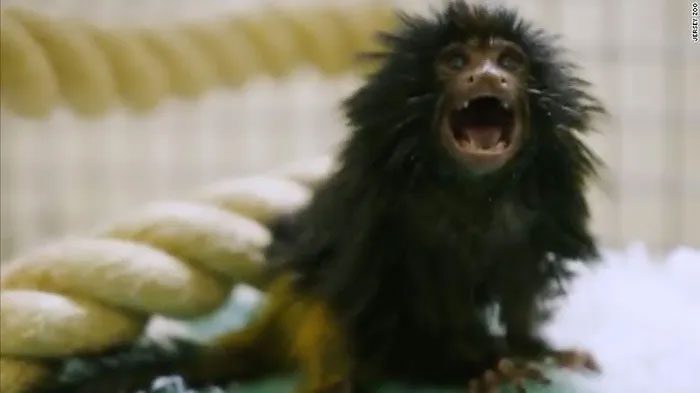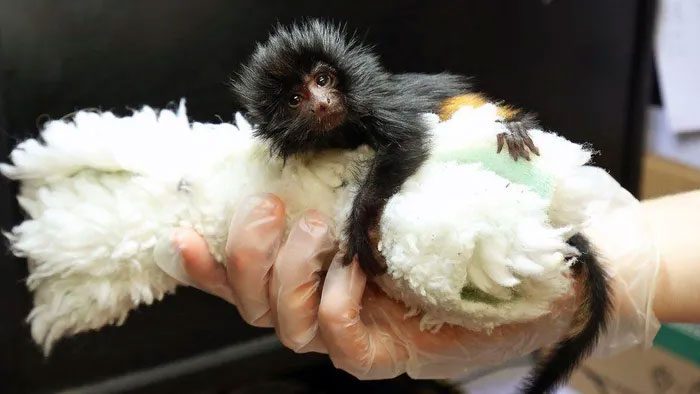A critically endangered black-faced lion tamarin has been born at Jersey Zoo in the UK.

There are currently fewer than 2,000 black-faced lion tamarins in the wild. Grace, the monkey in the picture above, was too weak to hold onto her mother when she was born at Jersey Zoo.
At the end of March, Jersey Zoo celebrated the birth of this rare monkey on Twitter. They explained that the baby monkey is named Grace and was too weak to cling to her mother. Therefore, the staff at the zoo provided extensive support to care for the newborn monkey.
The zoo stated: “Thanks to the incredible efforts of the keepers, she has been able to reunite with her family and is growing strong.”
Black-faced lion tamarins are significantly smaller in appearance compared to the “cats” they are named after. These small monkeys weigh only between 0.5 to 1 kg when fully grown. They received their name due to their lion-like mane of fur.

The endangered status of the tamarin makes the birth of a black-faced lion tamarin at Jersey Zoo even more significant.
Tamarins are a small primate family found in South America. The black-faced lion tamarin is an endangered species found only in a small area of forest in southern Brazil, according to the Durrell Wildlife Conservation Trust, the organization that operates the zoo.
It is known that the majority of the wild black-faced lion tamarin population lives in an isolated area within the Morro do Diabo State Park in São Paulo, Brazil. This species is believed to have been extinct for nearly 50 years until it was rediscovered in 1972. The International Union for Conservation of Nature classifies the species as “endangered”, estimating that only about 1,600 remain in the wild due to deforestation and logging.

They are also sometimes referred to as golden lion tamarins due to their distinctive golden-colored fur.
Jersey Zoo, which specializes in these endangered species, was the first to successfully breed the black-faced lion tamarin in captivity in 1990, according to their website. Since then, the zoo has released several captive-bred monkeys back into the wild in Brazil.
In a video posted on the zoo’s Twitter page, the zoo’s Head of Mammals, Dom Wormell, explained that for a female monkey like Grace, she could “have between 10 to 12 offspring in her lifetime, which will help to enhance the breeding program for this species over a long period.”
He added: “We need to build a captive population in hopes of restoring the population in the wild.”

















































